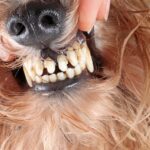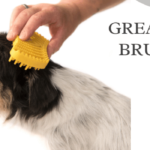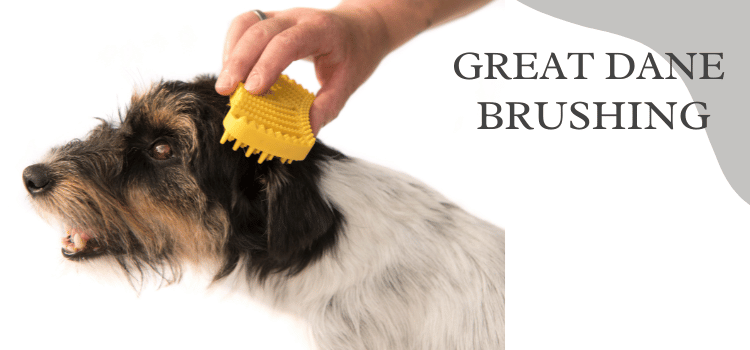Table of Contents
ToggleWho are the Great Danes?
Great Danes are muscular giants that are regal, clever, and beautiful with a pleasant disposition; they are also often referred to as the “apollo of dogs.” Because of its iconic appearance, Germany designated the great dane as its national dog in 1876.
History
Great Danes are believed to have existed for more than 400 years. German nobility probably developed these enormous dogs by breeding Irish wool for height, mastiffs for muscle, and greyhounds for speed because they needed to be physically fit and brave to hunt boars and defend families. Many people mistakenly believe that the Great Danes originate from Denmark, but they were actually developed in Germany.
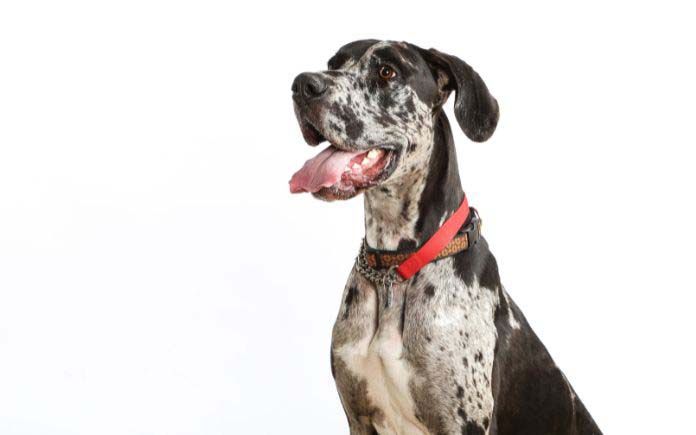
A French naturalist named George louis traveled to Denmark in the 1700s and saw a version of the boar hound that was slimmer and more like a greyhound in appearance. He named this dog grand danoi meaning great danish dog, so great dane is the English translation of the breed’s name in french the name stuck even though this breed has no Danish ancestry drawings of dogs that look like great Danes have been found on Egyptian artifacts dating back to 3000 B.C.
AKC Breed Popularity Ranking
The American Kennel Club maintains a database of American purebred dog pedigrees. The American Kennel Club (AKC) first recognized the Great Dane as a distinct breed in the year 1887.
Appearance of Great Dane
The large head of Dane is rectangular in shape, with a square jaw, and a deep snout. The top of the skull is thin and flat. Their eyes are medium-sized, profound, and dark, and they have vibrant, clever expressions.
Danes eyelids are almond-shaped and comparatively rigid, and they display well-developed eyebrows. Their ears drop forward and are snipped to stand erect, and their nose is typically black, with the exception of their blue Dane, which is a dark blue-black. The great Dane’s neck is firm, elevated, well-arched, long, and has muscle mass.
Height
The Great Dane is one of the biggest dog breeds in the world. The Great Dane named Zeus holds the record for the tallest dog ever, having reached an incredible height of 111.09 cm from Porter’s shoulder, which makes him about 4 meter tall.
Average height of male great dane is about 71 – 84 cm. While average height of female great dane is about 76 – 90 cm.
Weight
When Great Danes are born, they weigh only one or two pounds, but by the time they are six months old, they may weigh as much as one hundred pounds. These canines have the potential to continue maturing and growing until they are two or three years old.
Average weight of male great dane is about 119 – 200 pounds. While average weight of female great dane is about 99 – 130 pounds.
Great Dane Temprament
Many people are afraid of great danes because of their size, yet they are regarded as gentle giants for a reason.
These dogs are fearless, confident, and full of life. People are a priority for them. Individuals in the vicinity can’t refrain from gazing at them. When they go into a room, they often accidentally knock into anyone with their massive heads, even complete strangers and little children.
You may sometimes encounter one with lap dog inclinations when they want to be touched. Although some members of the breed may be hostile with dogs, especially if they were reared with them.
Great Dane Colors
The Great Dane’s clean, short, thick coat has a shiny look. The great dane often has six different coat color combinations: fawn, black, brindle, blue, harlequin, and mantle. The fawn coat must be a golden yellow tint and the mask must be black in accordance with akc guidelines. Fawn is the most popular shade of coat for great danes.
Superior breeding is determined by colour families. Within a family, it is preferable to cross Great Dane colors. Breeders like to combine the colours black and blue, harlequin and mantle, and fawn and brindle.
Black and white with a black mask are the typical markings for Great Danes. According to AKC regulations, each Great Dane colour has certain markings and patterns.
Maintaining a Great Dane
1. Health
Great danes are typically healthy, but much like other dog breeds, they have a predisposition for developing a few specific health conditions. The most common cause of death for danes is bloat.
This happens when danes are only given one very substantial meal every day to eat.
They should not drink a lot of water after they eat quickly and then do intense activity to flush out their system. Bloating is a condition that may occur after eating and is caused when the stomach becomes inflated with gas or air and then twists.
A procedure known as prophylactic gastropexy, which may assist in the prevention of some of the more problematic features of bloating, is given considerable consideration by many owners and breeders.
2. Grooming
Great Danes shed once or twice a year, but everyday brushing will cause more severe hair loss. To reduce shedding, brush your dog every day using a medium-bristle brush, a rubber grooming tool, or a hound glove. The great dane’s nail should sometimes be clipped. For more details please review, Do great Danes shed? and Dog is biting paws?
Brushing Danes’ teeth should start to r emove tartar accumulation at least two or three times each week. In order to prevent the germs that live within ears, they should be thoroughly examined. Therefore, it is important to examine your ears once a week for any redness or bad smell that may represent an infection.
Clear eyes without any redness or discharge are ideal. Since Great Danes are notorious for drooling, make it a practise to always have a hand towel on hand to mop up saliva.
Check your body while you groom for sores, rashes, or infections by looking for redness, soreness, or inflammation on the skin, around the mouth, eyes, nose, or feet.
3. Exercise
Although Great Danes may seem placid, they need regular activity that is age-appropriate. Depending on his age and activity level, an adult great dane requires 30 to 60 minutes of exercise per day.
A brisk stroll twice or three times each day may satisfy the 90 minutes of exercise that puppies and teenagers need each day.
They may be excellent running or hiking partners, but you must wait until the dog is two years old to do so to prevent harm to developing joints. Genes have a tendency to follow their noses.
4. Training
Training that is tough and persistent receives a very positive response from great danes. Obedience training for great danes is an absolute requirement. On the other hand, engaging in meaningful social activity is also of great significance.
They have a fundamental need for human interaction, love, and socialisation with both other humans and animals. Crate training should begin with your Great Dane when they are very young so that they may learn to acclimatise to their confined space as they grow into well-adjusted adults.
Crate training is something that is beneficial to every dog and is a type of technique to guarantee that your great dane does not have any accidents in the home or get into things that he shouldn’t. If he ever has to be boarding or hospitalised, crate training is something that will help him.
Although the majority of great danes do not constitute a parking problem, they may become habitual barkers if permitted to do so. They have a bark that is likely to be the most resonant, the deepest, and the one that carries the farthest of any canine. Therefore, the amount of barking should be limited.
5. Nutrition/Diet
A great dane doesn’t necessary need mountains of food despite its amazing size. Just make sure it’s of high quality and has the right number of calories.
The food quantity is based on their size and amount of activity. You should aim for a structure that is rich in protein, moderate in fat, low in carbohydrates, and moderate in calories.
A great danes’ metabolism is often sluggish. You want there to be little to no byproducts in the dog food you choose. Since dogs are carnivores by nature, you should look for true protein sources like lean muscle seeds and fish.
When feasible, you should add animal proteins in their diets since necessary fats are another important component of their diet. Omega 3 and 6 are two fats to watch out for in the diet of great danes.
Salmon, mackerel, or sardines are good sources of these fats for your dog’s diet, but pork, beef, hemp, and flax seeds are also good choices. As your dog ages, it may be worthwhile to supplement their diet with extra omega-3 to maintain the flexibility of their joints, much like humans do when they reach a certain age.
Avoid starchy carbs at all costs. To lessen the risk of bloating, include few to no grains, such as rice or potatoes, which are less digestible and may be heavy in sugar. Instead, try replacing them with blueberries, apples, carrots, and bananas. Use their preferred choice as training snacks to reduce their carb consumption, such as pumpkin seeds or almonds.
Intresting News about Great Dane
Great danes are the most famous cartoon dogs of all time, and the top three most famous cartoon dogs are all great danes.
what kind of dog is scooby doo? Yes! You guess right. Scooby-Doo, a renowned cartoon that debuted in 1969, is a brown great dane. Given his looks, the majority of dog fans undoubtedly already knew Scooby Doo was a Great Dane. Scooby is like a classic Great Dane, with tall, stocky body and lanky, slender legs. Scooby, however, has a less elegant body shape and build than the majority of Great Danes.
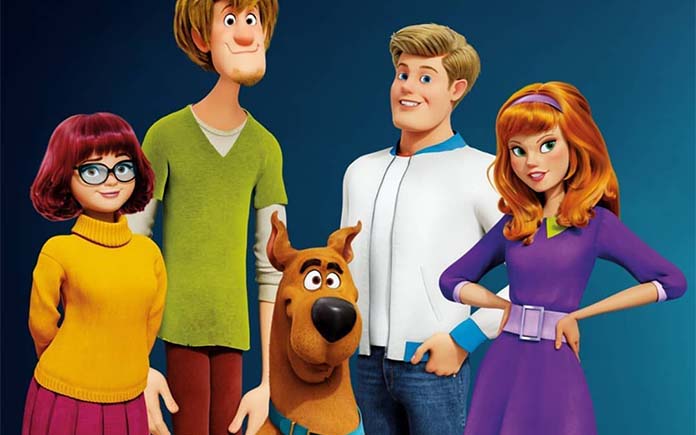
Another fantastic example of a Great Dane-based cartoon character is Marmaduke, a great dane who appears in the Sunday comic strip Marmaduke, which was first published in 1954 and was drawn by Brad Anderson. The strip is about a family called the Winslows and the antics of a dog named Marmaduke. In the animation “The Jetsons,” astro is yet another blue Great Dane character.
Great Dane Mixed Breeds
The Great Dane has emerged as a popular alternative to combine with other dogs in the search for the ultimate huge breed because to its attractive looks, kind disposition, and indisputable popularity.
Designer dog breeding is the procedure that produces a hybrid offspring from two distinct purebred parents. Of course, this may also occur at random in the wild between two purebred puppies with a Dane as a parent.
There are many popular great dane mix brees some of them are as below.


